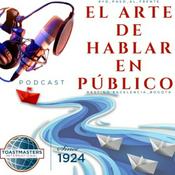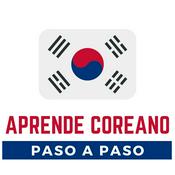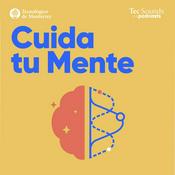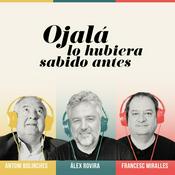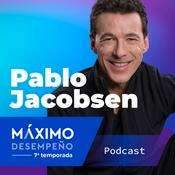546 episodios

Rx for Weight Loss: A Closer Look Series “Who is a Candidate for a GLP-1 Medication?”
08/1/2026 | 26 min
Host: Darryl S. Chutka, M.D. Guests: Tamim I. Rajjo, M.D., M.P.H.; Meera Shah, M.B., Ch.B. Using GLP-1 medications for weight loss has become extremely popular. Is this the latest fad in losing weight, or will these medications completely change our approach to managing obesity? They do appear to be very effective in promoting substantial weight loss. What is the history of these medications? Are there differences in the various GLP-1 medications available? What are the potential adverse effects of this drug class? This podcast is the first in a series of three on the GLP-1 medications prescribed for weight loss. The topic for this podcast is “Who Is a candidate for a GLP-1 Medication?” and my guests include Dr. Meera Shah and Dr. Tamim Rajjo, both from the Division of Endocrinology and Metabolism at the Mayo Clinic. Check out the series! Rx for Weight Loss: A Closer Look Series | Mayo Clinic School of Continuous Professional Development Connect with us and learn more here: https://ce.mayo.edu/online-education/content/mayo-clinic-podcasts

The Risks and Benefits of Alcohol
06/1/2026 | 23 min
WELCOME TO SEASON 6 OF THE MAYO CLINIC TALKS PODCAST! Host: Darryl S. Chutka, M.D. Guest: Warren G. Thompson, M.D. Alcohol can offer a variety of social and potential health benefits when consumed in moderation. However, alcohol is also associated with a variety of health risks, including addiction, increased likelihood of accidents, impaired judgment, cardiovascular problems, hepatic disease and even malignancy. Other than the social benefits, are there true health benefits of alcohol? Is there an amount of alcohol that’s considered safe? How can we as primary care clinicians convey the health risks of alcohol to our patients? The topic for this podcast is the “Risks and Benefits of Alcohol” and these are some of the questions I’ll be asking my guest, Warren G. Thompson, M.D., an internist and preventive medicine specialist at the Mayo Clinic. Connect with us and learn more here: https://ce.mayo.edu/online-education/content/mayo-clinic-podcasts

Re-Release!! "No Loafing Matter" Celiac Disease & Gluten Sensitivity
30/12/2025 | 29 min
HAPPY HOLIDAYS! Enjoy this re-release from Season 3 of Mayo Clinic Talks: Host: Darryl S. Chutka, M.D. Guest: Amy S. Oxentenko, M.D. It’s estimated that less than 1/3 of individuals with celiac disease have been properly diagnosed. When those with celiac disease ingest gluten, an immune response develops which attacks the small intestine leading to inadequate absorption of nutrients. If left untreated, celiac disease can lead to a variety of nutritional deficiencies as well as other serious consequences. Those with celiac disease are also at increased risk for coronary disease and small bowel cancers. In this podcast we’ll review celiac disease and gluten sensitivity with our guest, Amy S. Oxentenko, M.D., a gastroenterologist at the Mayo Clinic. We’ll discuss the symptoms of celiac disease, how to diagnose the condition and how patients with celiac disease should be managed. Connect with us and learn more here: https://ce.mayo.edu/online-education/content/mayo-clinic-podcasts

Re-Release!! "Lettuce Eat" Plant-Based Diets: Healthy and NonHealthy
23/12/2025 | 25 min
HAPPY HOLIDAYS! Enjoy this re-release from Season 3 of Mayo Clinic Talks: Host: Darryl S. Chutka M.D. Guest: Lisa Lammert, R.D.N., L.D. Cardiovascular disease is the leading cause of death to individuals in the U.S. Many feel that our typical American diet with its high saturated fat content is a major contributor to this. There’s good evidence that shows plant-based diets are cost-effective in lowering the risk factors for cardiovascular disease including obesity, hyperlipidemia, hypertension, and diabetes. They may also lower the number of medications an individual needs to take to manage their chronic diseases. So, are there any disadvantages to a plant-based diet? Are all plant-based diets healthy and what are the nutritional challenges for a patient on a plant-based diet? We’ll discuss these questions in this podcast on “Plant-Based Diets”. Our guest is Lisa Lammert, a registered dietician and nutritionist at the Mayo Clinic. Connect with us and learn more here: https://ce.mayo.edu/online-education/content/mayo-clinic-podcasts

Communication and Hospice
16/12/2025 | 26 min
Host: Darryl S. Chutka, M.D. Guest: Cory Ingram, M.D. As primary care providers, we have the privilege of guiding our patients through their healthcare journey, healing their medical conditions, managing them through chronic illness and at times, assisting them through the final chapters of their life. The topic for today’s podcast is “Hospice”, an important though often underutilized part of that journey. Hospice is not about giving up, it’s about changing the direction and goal of our care from cure to comfort. It prioritizes quality of life and maintaining dignity for patients going through a very challenging period of their life. My guest is Cory Ingram, M.D., a family medicine and palliative care physician from the Mayo Clinic who has extensive experience and insight into this topic. He’ll guide us through when we should consider hospice, who qualifies for hospice and the importance of good communication skills in helping patients and their families during this last period of their life. Connect with us and learn more here: https://ce.mayo.edu/online-education/content/mayo-clinic-podcasts
Más podcasts de Educación
Podcasts a la moda de Educación
Acerca de Mayo Clinic Talks
Escucha Mayo Clinic Talks, DianaUribe.fm y muchos más podcasts de todo el mundo con la aplicación de radio.net

Descarga la app gratuita: radio.net
- Añadir radios y podcasts a favoritos
- Transmisión por Wi-Fi y Bluetooth
- Carplay & Android Auto compatible
- Muchas otras funciones de la app
Descarga la app gratuita: radio.net
- Añadir radios y podcasts a favoritos
- Transmisión por Wi-Fi y Bluetooth
- Carplay & Android Auto compatible
- Muchas otras funciones de la app


Mayo Clinic Talks
Descarga la app,
Escucha.
















